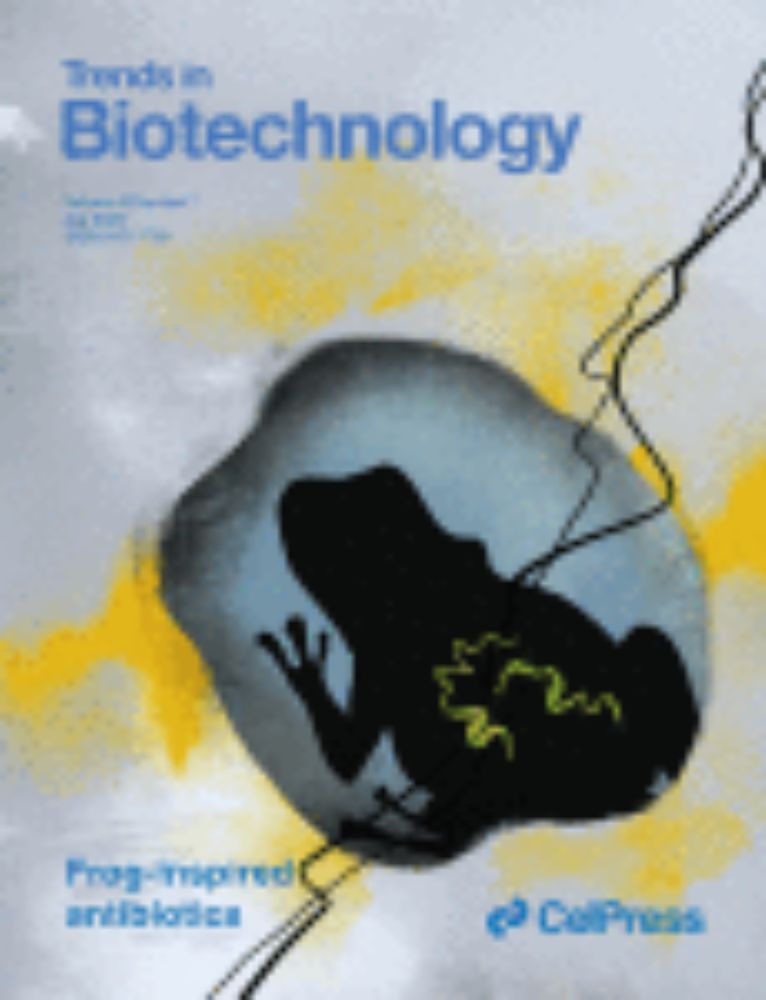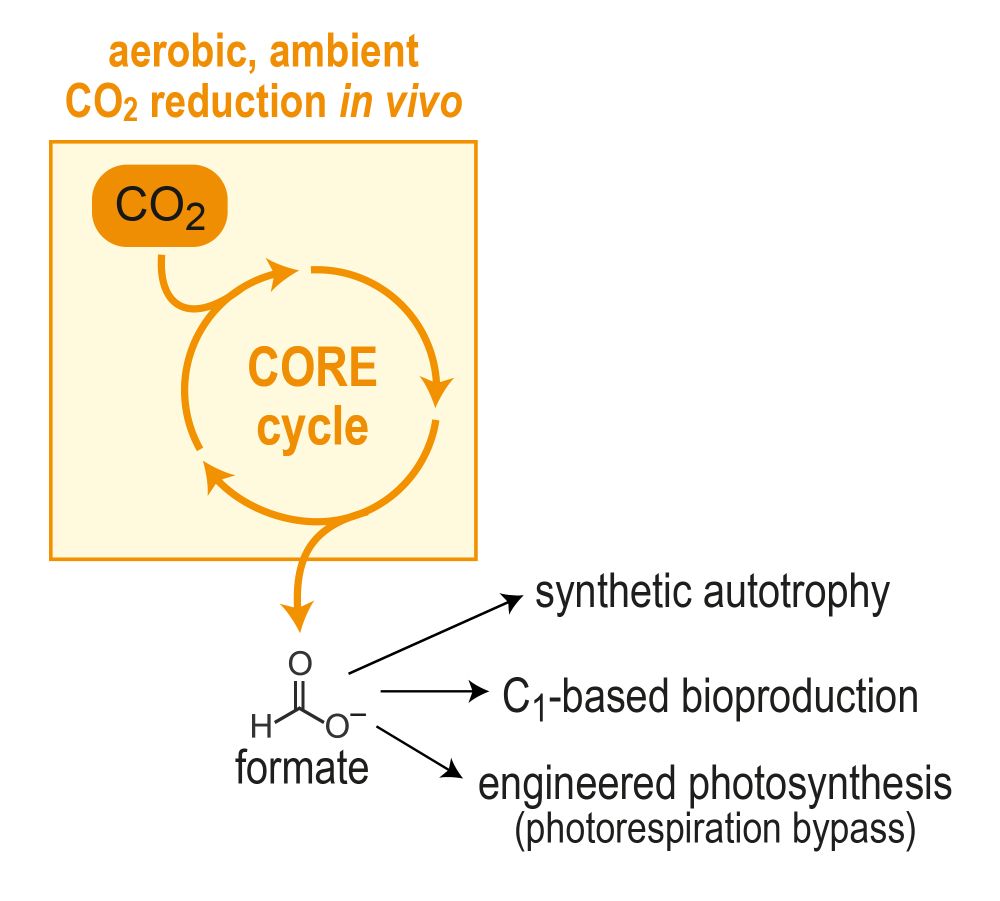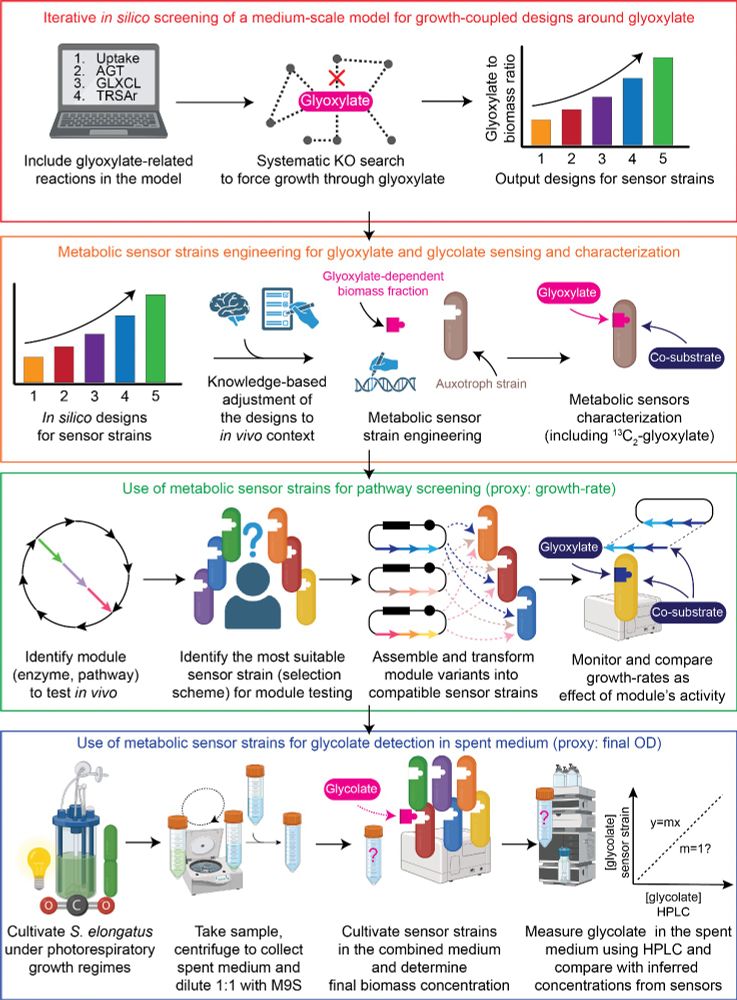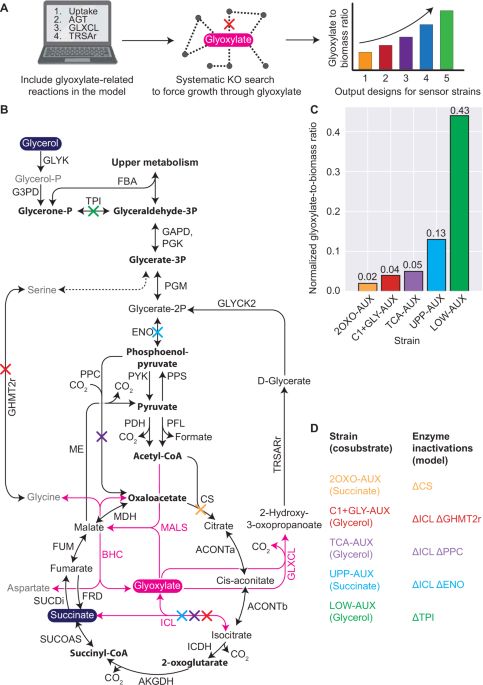
#Ccr, the key carboxylase of the CETCH, THETA and HOPAC cycles finally works #invivo !

#Ccr, the key carboxylase of the CETCH, THETA and HOPAC cycles finally works #invivo !
When evolution and enzyme engineering team up, they can convince microbes to assimilate sustainable carbon substrates preparing them for a life in a circular bioeconomy.
doi.org/10.1016/j.ym...
When evolution and enzyme engineering team up, they can convince microbes to assimilate sustainable carbon substrates preparing them for a life in a circular bioeconomy.
doi.org/10.1016/j.ym...
Postdoc in adaptive laboratory evolution and C1 synthetic metabolism!
Location: DTU Biosustain
🦠🧬🔬
Starting in 01/2026!
Fell free to reach out if you have questions!
efzu.fa.em2.oraclecloud.com/hcmUI/Candid...
Postdoc in adaptive laboratory evolution and C1 synthetic metabolism!
Location: DTU Biosustain
🦠🧬🔬
Starting in 01/2026!
Fell free to reach out if you have questions!
efzu.fa.em2.oraclecloud.com/hcmUI/Candid...
www.nature.com/articles/s41...

www.nature.com/articles/s41...
www.sciencedirect.com/science/arti...

www.sciencedirect.com/science/arti...
This is quite subjective , but imo
@helenasm.bsky.social just gave the most impressive talk of the conference so far and she is "only" in the third year of her PhD.
If you are interested in synthetic pathway engineering or C1 fixation you should check out her research.
This is quite subjective , but imo
@helenasm.bsky.social just gave the most impressive talk of the conference so far and she is "only" in the third year of her PhD.
If you are interested in synthetic pathway engineering or C1 fixation you should check out her research.
@naturecomms.bsky.social! 📝
We've designed and brought to life the “CORE cycle” – a new-to-nature pathway that provides a novel route for biological CO2 capture 🦠🌱
nature.com/articles/s41...
Take a look! Thread below... 🧵

@naturecomms.bsky.social! 📝
We've designed and brought to life the “CORE cycle” – a new-to-nature pathway that provides a novel route for biological CO2 capture 🦠🌱
nature.com/articles/s41...
Take a look! Thread below... 🧵
www.nature.com/articles/s41...

www.nature.com/articles/s41...
Read below to see how we developed the sensors and what they are good for 🥳.
www.nature.com/articles/s41...

Read below to see how we developed the sensors and what they are good for 🥳.
www.nature.com/articles/s41...

